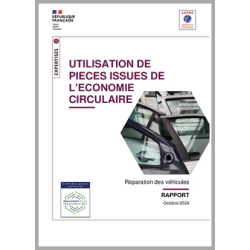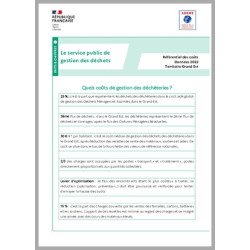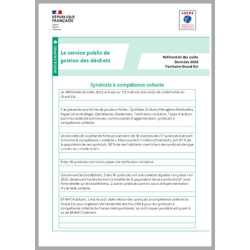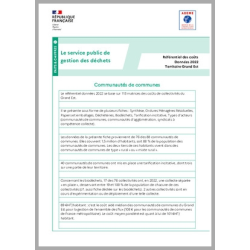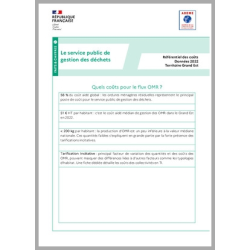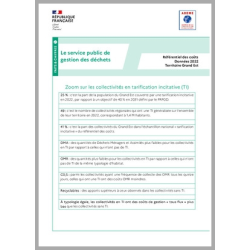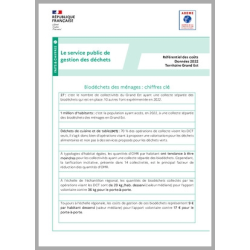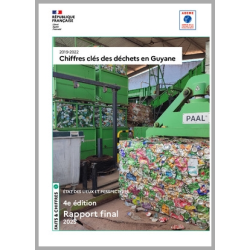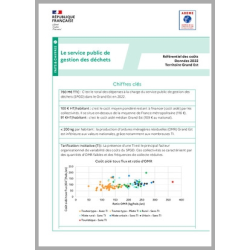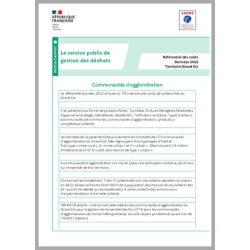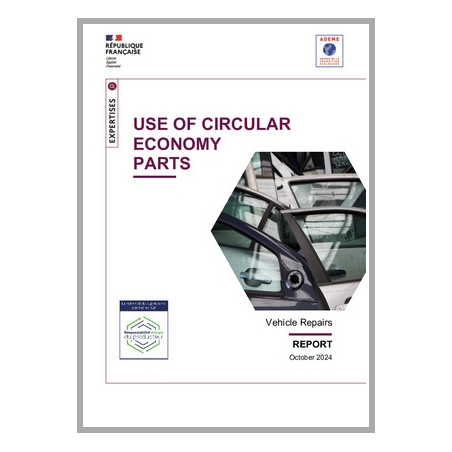
Use of circular economy parts
Présentation
Spare parts are a central component in the construction, repair, and maintenance of vehicles. Since the publication of Decree No. 2016-703 of May 30, 2016, concerning the use of automotive spare parts from the circular economy, automotive repair and maintenance professionals are required to also offer parts derived from the circular economy (PIEC) to their customers.
This study aims to provide an overview of the implementation of the 2016 decree and its implications for the automotive sector. The objective is also to offer insights into the future development of PIEC usage.
The study aims to:
- Provide an overview of the opinions, positions, and perspectives of various stakeholders in the automotive sector regarding the use of parts from the circular economy ;
- Identify and understand the implications and impacts of the decree on industry stakeholders;
- Identify obstacles and opportunities related to the use of circular economy parts.
The first part of the study presents the findings of a literature review aimed at analyzing interest in PIEC and the opinions that have emerged. The analysis focused on articles in the press and publications on social media. It highlighted two periods of interest in PIEC: in 2016, when the decree was published, and in 2022-2023, during a period of shortage of new spare parts. The articles reviewed were either purely informative or in favour of using parts from the circular economy.
This phase was followed by 70 interviews, which provided the opportunity to directly engage with ten categories of stakeholders, from producers to consumers, and gather their views on the decree and the PIEC sector. To complement the interviews and obtain representative data across the sector, online and phone surveys were conducted with both professionals and consumers.
The study reveals several key conclusions. Firstly, the sector is evolving rapidly, and although the decree has contributed to the professionalization and structuring of the PIEC sector, its direct impact on the use of these parts appears to remain limited. Repairers continue to express reservations about certain categories of used parts, particularly in mechanical and electronic areas. However, remanufactured parts are viewed more positively due to their reliability and warranties.
The main obstacles identified are related to the availability of parts, sometimes high costs, as well as the logistical complexity of sourcing and referencing the parts. The study also highlights the need for better traceability and greater standardization to reassure both professionals and consumers about the quality of used parts.
Among the improvement suggestions proposed to encourage the use of PIEC are increasing the availability of parts, better integration into repairers' inventory management systems, and economic incentives. Additionally, increasing communication about the environmental and economic benefits of PIEC, along with stronger warranties, could help shift consumer perceptions and boost the adoption of these parts across the industry.
Caractéristiques
- Date de mise en ligne
- 07/11/2025
- Type de document
- Etude/Recherche
- Nombre de documents
- 2
Spare parts are a central component in the construction, repair, and maintenance of vehicles. Since the publication of Decree No. 2016-703 of May 30, 2016, concerning the use of automotive spare parts from the circular economy, automotive repair and maintenance professionals are required to also offer parts derived from the circular economy (PIEC) to their customers.
This study aims to provide an overview of the implementation of the 2016 decree and its implications for the automotive sector. The objective is also to offer insights into the future development of PIEC usage.
The study aims to:
- Provide an overview of the opinions, positions, and perspectives of various stakeholders in the automotive sector regarding the use of parts from the circular economy ;
- Identify and understand the implications and impacts of the decree on industry stakeholders;
- Identify obstacles and opportunities related to the use of circular economy parts.
The first part of the study presents the findings of a literature review aimed at analyzing interest in PIEC and the opinions that have emerged. The analysis focused on articles in the press and publications on social media. It highlighted two periods of interest in PIEC: in 2016, when the decree was published, and in 2022-2023, during a period of shortage of new spare parts. The articles reviewed were either purely informative or in favour of using parts from the circular economy.
This phase was followed by 70 interviews, which provided the opportunity to directly engage with ten categories of stakeholders, from producers to consumers, and gather their views on the decree and the PIEC sector. To complement the interviews and obtain representative data across the sector, online and phone surveys were conducted with both professionals and consumers.
The study reveals several key conclusions. Firstly, the sector is evolving rapidly, and although the decree has contributed to the professionalization and structuring of the PIEC sector, its direct impact on the use of these parts appears to remain limited. Repairers continue to express reservations about certain categories of used parts, particularly in mechanical and electronic areas. However, remanufactured parts are viewed more positively due to their reliability and warranties.
The main obstacles identified are related to the availability of parts, sometimes high costs, as well as the logistical complexity of sourcing and referencing the parts. The study also highlights the need for better traceability and greater standardization to reassure both professionals and consumers about the quality of used parts.
Among the improvement suggestions proposed to encourage the use of PIEC are increasing the availability of parts, better integration into repairers' inventory management systems, and economic incentives. Additionally, increasing communication about the environmental and economic benefits of PIEC, along with stronger warranties, could help shift consumer perceptions and boost the adoption of these parts across the industry.
- Auteurs
-
ADEME
JADEAU Aurélien
LECOINTRE Eric
GRANDIN Thomas
In Extenso Innovation Croissance
ROUQUETTE Louise
GAILLARD Déborah
DEPROUW Alice
PERRILLON Mathieu
IN NUMERI
HAEUSLER Laurence
- Public(s)
-
Entreprises et fédérations professionnelles
- Type de document
-
Etude/Recherche
- Thématique
-
Economie circulaire et Déchets
Société et politiques publiques
- Collection
-
Expertises
- Date d'édition
-
10/2024
- Date de mise en ligne
-
07/11/2025
- Nombre de documents
-
2
- Langue
-
Anglais
Documents associés



